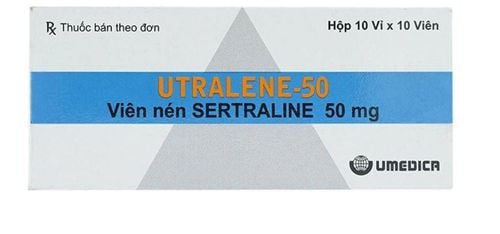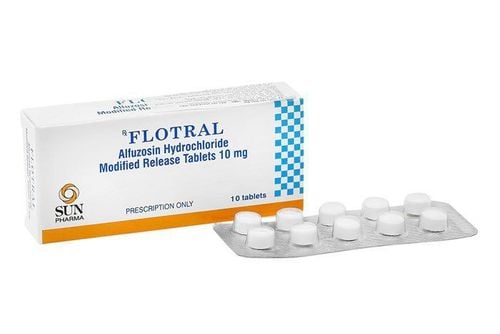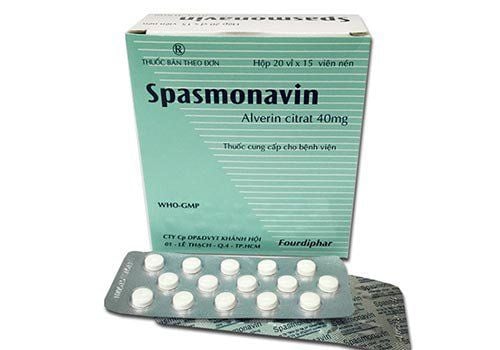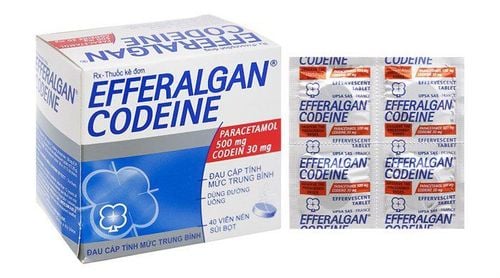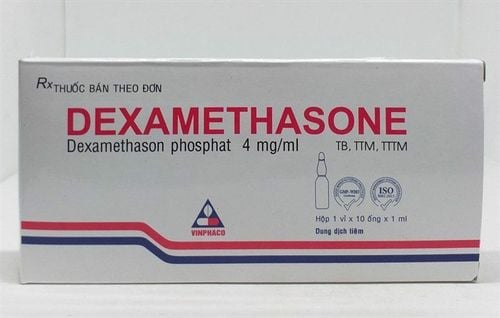This is an automatically translated article.
Clolar is indicated for the treatment of relapsed or refractory acute lymphoblastic leukemia after at least two prior regimens in patients aged 1 to 21 years. Let's learn more about what Clolar is used for through the article below.1. What is Clolar?
Clolar has the active ingredient Clofarabine, a nucleoside metabolism inhibitor indicated for the treatment of pediatric patients 1 to 21 years of age with relapsed or refractory acute lymphoblastic leukemia after at least two regimens. previous item. Clofarabine has an affinity for the phosphorylation-activating enzyme, deoxycytidine kinase. The drug inhibits DNA synthesis by reducing cellular deoxynucleotide triphosphate levels through inhibition of ribonucleotide reductase and by terminating DNA chain elongation. Clolar also inhibits DNA repair through competitive inhibition of DNA polymerase. Clofarabine 5'-triphosphate also disrupts the integrity of the mitochondrial membrane, leading to the release of pro-apoptotic mitochondrial proteins, cytochrome C and apoptosis-inducing factor, which in turn leads to programmed cell death.2. Dosage and usage of Clolar?
The recommended dose of Clolar for children is 52mg/m2 as an intravenous infusion over 2 hours daily for 5 consecutive days. Repeat treatment cycles after recovery or organ function returns to baseline, approximately every 2 to 6 weeks. Dosage is based on the patient's body surface area (BSA), calculated using actual height and weight prior to the start of each cycle. To prevent drug incompatibilities, do not administer other drugs through the same intravenous line. Carry out subsequent cycles no earlier than 14 days from the start of the previous cycle. Implement supportive measures, such as intravenous fluids, antihypertensive therapy, and alkalinization of the urine during the 5 days of Clolar administration to reduce the effects of tumor lysis and adverse reactions. other harm. Discontinue Clolar if hypotension occurs within 5 days of dosing. Monitor patients taking medications that affect blood pressure. Monitor kidney and liver function during 5 days of taking Clolar. Monitor heart function while taking Clolar. Reduce dose by 50% in patients with renal impairment with creatinine clearance (CrCL) between 30 and 60 mL/min. There are insufficient data to make dosing recommendations in patients with CrCL less than 30 mL/min.
3. Side effects of Clolar
Serious adverse reactions when using Clolar drugs include:
Myelosuppression. Hemorrhage. Serious infection. Hyperuricemia (tumor lysis syndrome). Capillary leak syndrome. Systemic inflammatory response syndrome (SIRS). Venous disease in the liver. Toxicity on the liver. Renal toxicity. Enteritis . Skin reactions.
4. Notes when using Clolar
Clolar causes myelosuppression which can be severe and prolonged. Myelosuppression is usually reversible upon interruption of Clolar therapy. Monitor complete blood count while taking Clolar. Serious bleeding including brain, gastrointestinal, and pulmonary hemorrhage and even death has occurred. The majority of cases are associated with thrombocytopenia. Monitor platelets, coagulation parameters and treat accordingly when the above event occurs. Clolar increases the risk of infections, including severe and fatal sepsis. Monitor patients for signs and symptoms of infection, discontinue Clolar, and treat promptly. Clolar use may lead to tumor lysis syndrome. Monitor patients undergoing treatment for symptoms of tumor lysis syndrome. Preventive measures including adequate intravenous fluids and measures to control uric acid should be initiated in patients with suspected tumor lysis syndrome. Clolar may induce a cytokine release syndrome (eg, tachypnea, tachycardia, hypotension, pulmonary edema) that may progress to systemic inflammatory response syndrome (SIRS) with capillary leak syndrome and functional impairment can be fatal. Monitor patients regularly for these conditions. Close monitoring of this syndrome and early intervention can reduce the risk. Stop Clolar immediately and provide appropriate supportive measures. Prophylactic use of steroids may be beneficial in preventing signs or symptoms of SIRS or capillary leak syndrome. Consider diuretics and/or albumin. After the patient is stabilized and organ function has returned to baseline, treatment with Clolar at a reduced dose of 25% may be considered. Patients who have previously received a hematopoietic stem cell transplant have a higher risk of developing venous thromboembolism in the liver. Serious hepatotoxic events have been reported in a study in pediatric patients with recurrent or refractory acute leukemia. Monitor and discontinue Clolar if any of these conditions are suspected. Serious and fatal hepatotoxicity, including hepatitis and liver failure, has occurred with the use of Clolar. Elevations in AST and ALT usually occur within 10 days of taking Clolar and return to levels 2 or less within 15 days. Monitor liver function and signs and symptoms of hepatitis and liver failure. Discontinue Clolar immediately if liver enzymes grade 3 or higher and/or bilirubin are raised. Clolar can cause acute renal failure. Monitor patients for nephrotoxicity. Fatal and serious cases of enteritis, including neutropenic colitis, cecal and C difficile colitis, have occurred during treatment with clofarabine. This occurs more often within 30 days of treatment and during combination chemotherapy. Enteritis can lead to complications of necrosis, perforation, hemorrhage, or sepsis. Monitor patients for symptoms of inflammatory bowel disease and treat promptly. Fatal cases of Stevens-Johnson syndrome (SJS) and toxic epidermal necrolysis (TEN) have been reported. Discontinue clofarabine if exfoliative or bullous rash occurs, or if SJS or TEN is suspected. Based on findings from animal reproduction studies and mechanism of action, Clolar may cause fetal harm when administered to a pregnant woman. Advise women of fertility about the possible risk to the fetus and to use an effective method of contraception during treatment with Clolar and for at least 6 months after the last dose. Advise men with female partners of fertility to use effective contraception during treatment with Clolar and for at least 3 months after the last dose The following is an overview of Clolar. If you have any questions or need more information about the drug, do not hesitate to contact your doctor or pharmacist for advice.




